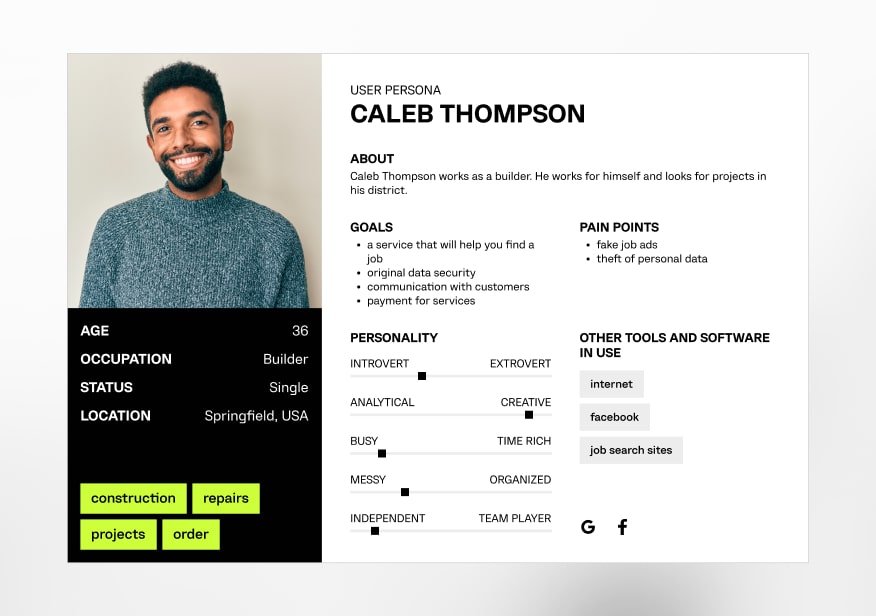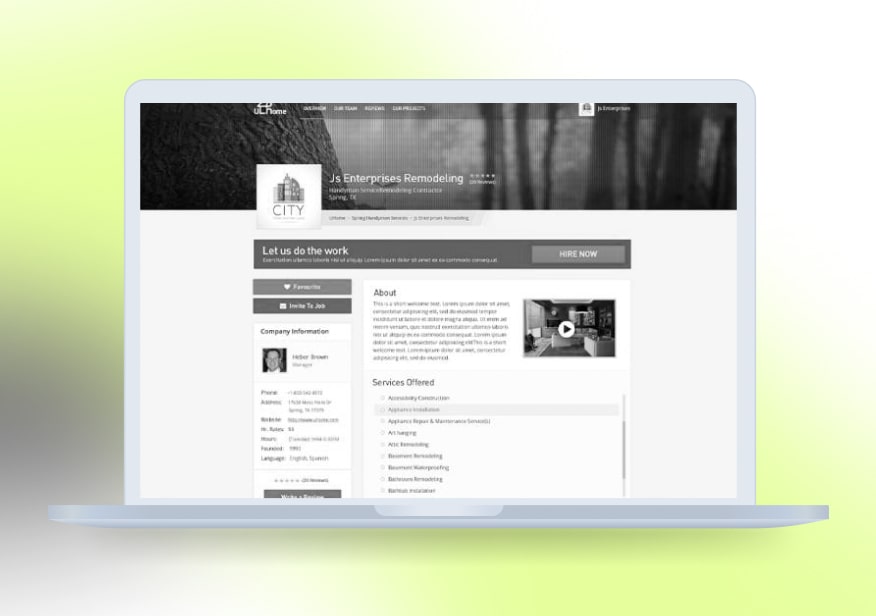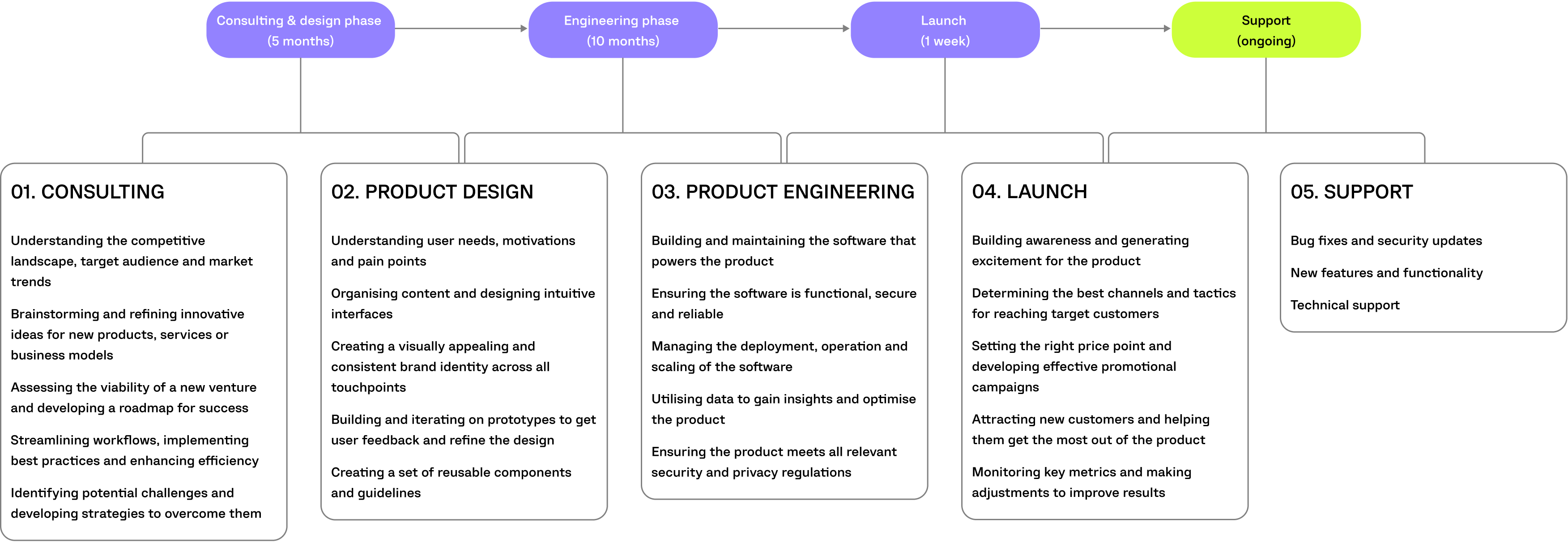Get pricing →
- Services
- Capabilities
- Industries
- Clients
- Solution Hub
- Company
- EN
- Get pricing
Our client, NEXTDOOR, needed a solution to connect residents with reliable local service providers. Computools helped develop a successful social commerce platform, enabling businesses to promote services and connect with potential customers. The platform has significantly improved community engagement and local service accessibility.
The company, headquartered in the United States, has a record of success in developing innovative solutions that improve the lives of residents and businesses. The client’s mission is to connect people and businesses in their neighbourhoods to create a more vibrant and supportive community.
Given the limitations of traditional service directories and the fragmentation of online marketplaces, the client envisioned a hyperlocal solution. This platform would provide residents with qualified services and foster a sense of ownership and collaboration within the community.
Computools engineers have built a two-sided software as a service platform. This social commerce platform allows users to interact with businesses and communities in their residential postcode to get useful updates about their community, complete projects and tasks from local service providers, and find relevant deals from businesses and other users. This platform is intended for two types of users: regular users and businesses.
Each category has received its own set of functions and options. Businesses can access the business dashboard and receive notifications for potential projects in their area. Regular users have the projects, a dashboard, social features, a profile and a newsfeed. The platform’s monetisation is carried out through a monthly subscription and advertising in specialised blocks, with additional fees for project promotion.
Throughout the project, we strategically employed a combination of readily available and tailor-made solutions to ensure the platform’s seamless operation and performance. Initially launched in a select test market within the United States, NEXTDOOR quickly garnered significant traction and achieved early profitability, demonstrating its compelling value proposition and resonating with a local community.
Several key issues we solved:
The client’s selection process was rigorous and comprehensive, reflecting the project’s importance to the organisation. The client began by conducting extensive research to identify potential development partners. This research included reviewing online portfolios, gathering recommendations from industry peers, and attending industry events.
The client then narrowed the field to select candidates for further evaluation. This evaluation included a detailed review of the candidate’s experience, expertise and capabilities. The client also interviewed key team members to assess their cultural fit and commitment to the project.
In the end, the client selected Computools as their development partner based on the following factors:
The main idea of the project was to create an online social networking service for people who live in the same area, allowing them to connect and help each other with household matters. The client turned to Computools for a reliable software development solution—a marketplace—to provide robust services.
NEXTDOOR discovered Computools through extensive research, which included reviewing portfolios, gathering recommendations, and attending industry events. They considered other solutions but ultimately chose Computools due to our expertise in building complex web platforms, particularly marketplaces. The specific features that set us apart included our comprehensive understanding of technologies like AngularJS, Node.js, and MongoDB, and our use of Agile methodologies.
We participated as generalists and specialists, focusing on developing the platform from scratch. Our team built a robust social commerce platform, ensuring it was scalable and secure. We simplified user registration, implemented service provider bookings and ratings, and integrated strong analytics and marketing services.
Key decisions included identifying inefficiencies in the initial concept and proposing changes, customising algorithms to match service providers with users better, and analysing user behaviour to develop functional flows. We addressed the challenges of building the project from scratch and working within limited time constraints. The strengths we leveraged included high demand for the platform, low competition, and well-planned user engagement models. Our iterative development and continuous feedback loops ensured a flexible, rapidly adaptable solution that resonated with the local community, leading to early profitability and significant traction in the test market.
The design development began with thinking through the user experience, which ensured the marketplace's convenience and simplicity. The user interface was designed in a minimalistic style, but it is intuitive for service providers and potential customers. The design implementation was done in parallel with developing the platform's functionality, ensuring a quick fix and debugging.

Introducing the busy homeowner seeking reliable local service providers

Visualising the user journey, click by click, from browsing services to booking appointments

Designing an intuitive and engaging platform that empowers communities and businesses
AngularJS
AngularJS was crucial for this project as it provided a powerful front-end framework that addressed the complexities of web development. This framework enabled us to build an interactive and user-friendly interface for the NEXTDOOR platform.
Node.js
Node.js was essential for executing JavaScript code outside of the browser, allowing us to create a seamless server-side environment. This enabled the development of dynamic web page content and improved the overall performance of the NEXTDOOR platform.
Sails.js
Sails.js allowed us to easily build customised enterprise-grade applications, which is crucial for developing real-time features like live chat. Its compatibility with Angular ensured smooth integration and data-oriented development, enhancing user experience on the platform.
JavaScript
JavaScript was fundamental in making web pages interactive and highly responsive, which was key for providing a user-friendly experience and preventing frustrating page reloads. This ensured that users could easily navigate and engage with the platform.
MongoDB
MongoDB's high availability, horizontal scaling, and geographic distribution capabilities were vital for managing the platform's large data volumes. They ensured reliable and efficient data storage and retrieval and supported the platform's scalability.
Passport
Passport's middleware design pattern for authenticating requests allowed us to implement a robust and flexible authentication layer. This was crucial for ensuring secure user registration and login processes, enhancing the platform's security.
Lodash
Lodash simplified the handling and manipulation of objects and arrays, streamlining the development process. This allowed us to write cleaner, more efficient code, enhancing the overall functionality of the platform.
Nodemailer
Nodemailer’s built-in dependencies and simplicity made code audits easier and ensured reliable email communication within the platform. This was essential for sending notifications and confirmations to users.
Grunt
Grunt automated frequent tasks, such as minification, compilation, unit testing, and linting, increasing development efficiency and ensuring the NEXTDOOR platform was built quickly and with high quality.
CSS3
CSS3 provided the latest styling features, allowing us to create a visually appealing and intuitive user interface. Its advanced features, like rounded corners, gradients, and animations, contributed to the platform’s modern and engaging design.
Computools employed an Agile methodology, specifically Scrum, to manage the NEXTDOOR project. Scrum’s iterative cycles and continuous feedback loops allowed for rapid prototyping, adjustment and optimisation throughout the development process.
It prioritises open communication and close collaboration between the client and the development team. Scrum’s focus on delivering working software in short sprints fostered a sense of urgency and efficiency within the team. This rapid delivery cycle allowed for early feedback and faster iteration, ultimately leading to a quicker time to market for NEXTDOOR.


Computools was selected through an RFP process. They were shortlisted and selected from between 5 other suppliers. Computools has worked thoroughly and timely to solve all security issues and launch as agreed. Their expertise is impressive.